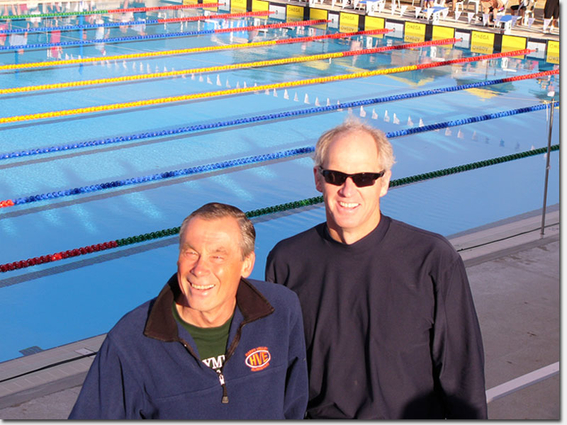Computational physicist Shestakov masters fluid dynamics
When Alek Shestakov decided to go to go to Perth, Australia for the 2008 FINA World Masters Championship competition a few weeks ago, he joked he’d just be carrying his buddy’s towel.
After all, his friend and training partner is about 15 years younger than him and is an excellent swimmer.
But Shestakov is no slouch. At 59, he walked away with a first in the 400-meter individual medley (IM), second in the 200-meter backstroke, third in the 200-meter IM and fourth in the 100-meter butterfly.
However, this wasn’t the first time the computational physicist in AX Division competed in a swim meet. In fact, he’s been swimming competitively since he was about 13 years old. Not only that, he swam for UC Berkeley in the late 1960s and early 1970s earning himself a swimmer of the year award. He qualified and participated in the 1968 Olympic trials in the 200-meter IM and 400-meter IM (coincidentally the same events he earned a third and first in this year’s World Masters event).
To prepare for this year’s event, Shestakov would train for at least one hour per day, six days a week for a whole year. As the event neared, he worked out three to four times a week and did some cross training on a bicycle. (Masters swimming is a special class of competitive swimming for swimmers 18 years or older).
But he knew when his friend asked him to go along that he simply couldn’t sit by and watch others compete.
"Perth is a long way away and there were few Americans competing," he said. "I decided that I wasn’t going to pay all that money to go there and just watch."
Swimming always has been in Shestakov’s blood. Born in Yugoslavia, his family moved to Venezuela when he was 2 years old. His father taught him to swim and he began training at Casa Blanca, a swim and tennis club in Venezuela. When he came to the states at 9, he started competing in swim meets by the age of 13. And now, his 12-year-old son is carrying on the tradition by competing in water polo.
But Shestakov is modest about his swimming feats.
Lab physicist John Crane has known Shestakov for close to 30 years. In fact, the duo used to swim together at the Lab pool when it was still open. Crane is quick to sing the praises of Shestakov’s accomplishments. "He was a top open water and masters swimmer in the 1970s and 1980s, swimming on winning Trans Tahoe Relay teams and winning numerous open water swims," Crane said.
The Trans Tahoe Relay is the only swim race that crosses two state lines and has become one of the most popular relay open water swims in the United States. It is a rigorous event that requires a high level of physical fitness. A team of six swimmers cross the lake (11.5 miles). No wetsuits are allowed. Water temperature varies from 55 degrees to 60 degrees Fahrenheit.
In addition, Shestakov was one of the co-founders of Shadow Cliffs Open Water Athletic Team (SOWAT), which is still going strong 25 years later.
"Alek is extremely competitive and driven to win, but he also is a warm, generous and very caring family man who is very involved in his son’s athletics and Boy Scouts," Crane said. "He calls his elderly mother (who lives in San Francisco) every day and speaks to her in Russian."
Shestakov took a break from competitive swimming for a few years to raise a family, but he recently returned to competition for the 2006 FINA World Masters at Stanford.
An avid skier, cyclist, sailor and now an international swimmer, Shestakov said the event was unforgettable.
Some notables at the 2008 championships: swimming in the 100-meter butterfly with a Hungarian, South African, Australian and Norwegian; a South African man in the 55-59 age group who broke world’s records in the 200-meter IM; a team of synchronized swimmers in their 70s that wowed the crowd: the water polo team from Kazakhstan whose members averaged 6-foot 5-inches and weighed from 250-270 pounds ("They were huge and they were quick. It was unbelievable. A lot of them were ex-Olympians," Shestakov said. "You wouldn’t want to meet them in a dark alley."); an 80-year-old Swedish woman who proudly walked around the grounds with a gold medal around her neck; 70-year-old divers; and a 79-year-old Australian who didn’t let a missing leg stop him from competing.
"It’s fun to see these guys who are in their late 70s or 80s," Shestakov said. "They weren’t giving up. You never lose the spirit of competition."
As for future international swimming adventures, "In a couple of years, the Worlds will be in Sweden. I’m thinking about going."






